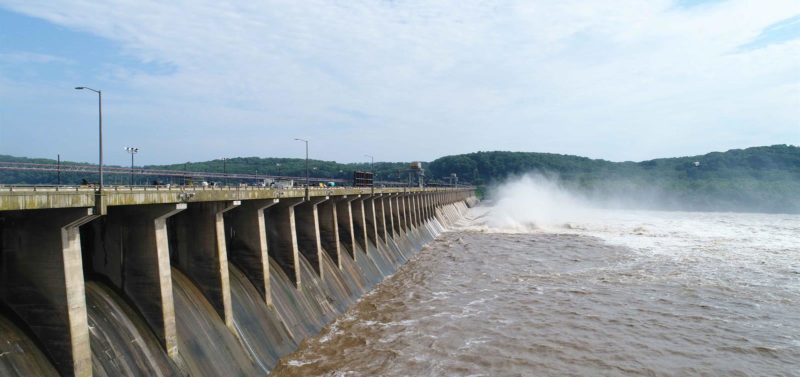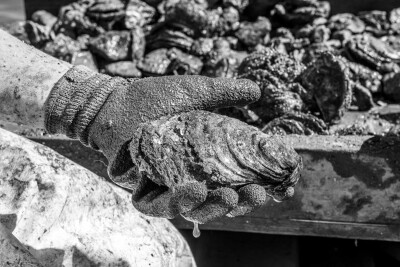The state of Maryland and Exelon Generation struck an agreement to clean up the lower Susquehanna River around the Conowingo Dam, where pollution from the river’s vast watershed pours into upper Chesapeake Bay.
The settlement resolves issues from a state environmental review of the hydroelectric dam’s water quality certificate, and specifies new projects to improve water quality, provide passages for fish and eels, shellfish and habitat restoration, and cleaning up debris that accumulates at the dam near Havre de Grace, Md.
Improvements at the dam have been a long-sought goal of Chesapeake Bay fishing and environmental advocates to help control runoff pollution coming downstream from the Susquehanna’s 27,510 square mile watershed.
“While the reservoir has long served as an effective way to control pollution, recent studies show that the reservoir behind the Conowingo dam no longer has the long-term ability to store sediment and associated nutrients,” according to the federally funded Chesapeake Bay Program. “In 2015, a U.S. Geological Survey report found that the reservoir behind the dam had reached 92% capacity and had lost its ability to trap sediment and attached nutrients over the long term.”
The dam traps an estimated 3.5 million pounds of phosphorus, a major nutrient contributor to the bay’s problems, and about 4 billion pounds of sediment every year. Exelon says it removes about 1.2 million pounds of trash and sediment annually but cannot get it all.
“The Conowingo Dam, it’s like a curse word for us. They flood us with fresh water and it stops the oysters from spawning,” Maryland oysterman Stoney Whitelock told National Fisherman in a recent interview.
The agreement settles years of dispute between Exelon and state officials.
“This comprehensive, enforceable commitment by Exelon is part of Maryland’s holistic strategy to improve water quality and accelerate the restoration of the Chesapeake Bay,” Maryland environment Secretary Ben Grumbles said in announcing the settlement Oct. 29.
“The agreement is designed to substantially improve water quality while ensuring Maryland’s largest source of renewable energy continues to deliver environmental and economic benefits for the next generation,” said Chris Crane, president and CEO of Exelon.
But the non-profit Chesapeake Bay Foundation contends the settlement falls short.
“While all of these are laudable projects, CBF had advocated that the majority of any funds be spent on upstream practices that would reduce the sediments and nutrient pollutants that reach the dam,” the group said in a prepared statement. “This approach was identified by the 2016 Lower Susquehanna River Watershed Assessment as being the most cost-effective way to reduce downstream water quality impacts.”
According to Exelon, highlights of projects covered by the agreement include:
- A contribution of Exelon-owned land and more than $25 million in funding to support the construction, operations, and maintenance of a mussel hatchery along the banks of the Susquehanna River. Mussels spawned at the hatchery will be used to stock the river system and help improve water quality by filtering nutrients and sediments before they reach the bay.
- Continuing to address debris accumulation, including an engineering study examining additional methods to divert debris before it reaches the dam, and using skimming and other methods to remove debris.
- $11 million of improvements to eel passage that will help facilitate mussel restoration with its benefits to nutrient reductions, plus a contribution of $1 million to fund eel passage research.
- More than $47 million in funding for climate resiliency projects, including submerged aquatic vegetation, aquaculture, clam and oyster restoration projects, and living shoreline creation to help make the Susquehanna River and Chesapeake Bay more resilient to severe weather events.
- Modifications to river flow, valued at $52 million, to enhance habitat for aquatic species like American shad and river herring that live downstream of the dam, and for submerged aquatic vegetation that helps trap sediment remove pollution and provide fish habitat.







